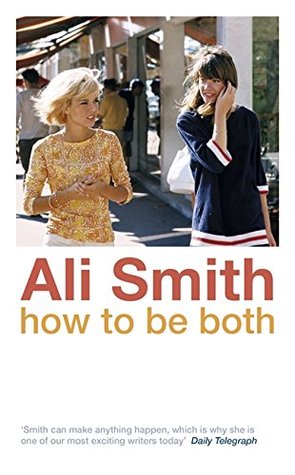Our book group choice for March 2016 is How to Be Both by Ali Smith. Passionate, compassionate, vitally inventive and scrupulously playful, Ali Smith’s novels are like nothing else. A true original, she is a one-of-a-kind literary sensation.
How to Be Both is a 2014 novel by Scottish author Ali Smith. It is a genre-bending work that tells two stories, one set in the 1460s and the other in the present day. The two stories are interconnected by the theme of art and its power to capture and transmit the human experience.
The story set in the 1460s follows the life of Francesco del Cossa, a real-life Italian Renaissance painter. Del Cossa is commissioned to paint a series of frescoes for the Palazzo Schifanoia in Ferrara. The frescoes are a depiction of the seven planets, and they are filled with strange and fantastical creatures. As del Cossa works on the frescoes, he is haunted by visions of a young woman who seems to be both real and imaginary.
The story set in the present day follows the life of George, a teenage girl who is struggling to cope with the death of her mother. George is obsessed with the frescoes by del Cossa, and she begins to see parallels between her own life and the story of the young woman in the frescoes. George also begins to develop a relationship with Helena, a classmate who is half-Pakistani.
As the two stories unfold, they begin to intertwine in unexpected ways. The young woman in the frescoes seems to be a manifestation of George’s own grief, and she helps George to come to terms with her mother’s death. The frescoes also provide George with a way to understand her own identity as a young woman who is both Scottish and Pakistani.
Discussion Questions for How to Be Both
- One of the many unique things about How to be both is the fact that the book has been printed in two ways, half with the section “Camera” preceding “Eyes” and half the other way around. Discuss among the members of your group (or, if you read this yourself, imagine) the way your experience of the novel as a whole was different depending on which section you read first.
- How does this first impression influence your ability to imagine the experience of the reverse order, too, or if you were to read the novel again the opposite way? Do you think one order is stronger than the other, and if so why?
- What are some of the types of dualities or binaries explored in the novel, implicitly and explicitly? When characters are aware of them, does that recognition of a thing or scenario as being “both” lead to greater clarity or greater ambiguity?
- Compare the first-person voice of Francescho with the third-person voice of George. How do these narrative differences reflect each of their characters as well as the question of what it means to see vs. seen?
- Both George and Francescho lose their mothers in adolescence. How does that absence influence their (young) adult identities, including with respect to their femininity/gender?
- How do the characters each try to preserve their mother via their own creations?
- How do the two fathers in the book shape their children’s identities—their daughters’ and sons’ alike?
- What kind of comforts and challenges do the young boys—George’s brother and Francescho’s assistant—present to these characters?
- Francescho and George both have extreme first impressions of sex, via the “house of pleasure” and pornography, respectively. How do you think this explains, affects, or might be intrinsic to their complicated sexual identities and romantic interests in their stories?
- The major piece of connective tissue between the two parts of the novel is George’s mother’s love of a painting by Francesco del Cossa, whom we meet/have met as the narrator in “Eyes.” Besides this crucial narrative tie, how do painting and frescoes in particular inform themes of love and memory in the two parts?
- In what way does Ali Smith play with experimental aesthetic forms in her construction of How to be both? How are other female innovators (most unacknowledged by history) featured in the novel?
- Do George and Francescho “speak” as differently as you’d expect for characters separated by over 500 years and from different parts of the world? How does Smith illustrate through their language their own self-awareness? Which do you think has more command over her/his expression, linguistically and/or visually?
- One of the paintings that George and H see by del Cossa of the Annunciation features a snail at the bottom “crossing as if it’s a real snail crossing a picture. The snail shape is nearly the same as the God shape [with] a perfect spiral in the shell.” What does this image represent about the novel as a whole and its central themes?
Individual Ratings
DKB's Rating 





